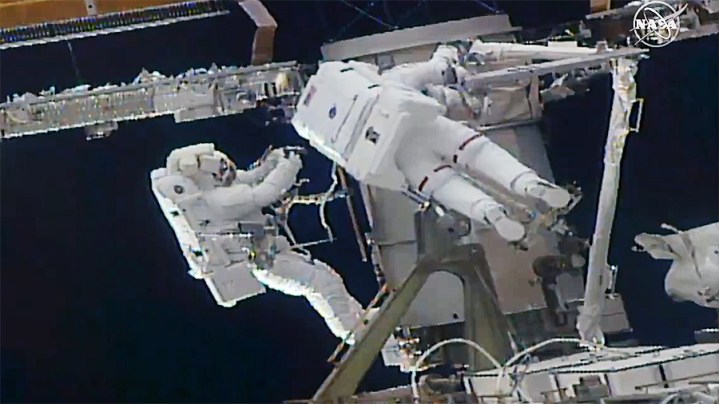
The crew of the International Space Station (ISS) completed another spacewalk yesterday, Friday, March 5, successfully installing modifications for the station’s new solar arrays. NASA astronaut Kate Rubins and Japanese Space Agency (JAXA) astronaut Soichi Noguchi completed the spacewalk at 10:33 a.m. ET.
The spacewalk lasted for nearly seven hours, topping off at six hours and 56 minutes. Rubins and Noguchi are safely back inside the station with their work complete for now.
The purpose of the spacewalk was to prepare the space station for a set of new solar arrays, scheduled for installation later this year. The new arrays will be more compact and more efficient than the current arrays, which harvest energy from the sun in order to power the station. Some of the current solar arrays are twenty years old, and although they are still functioning their performance has degraded over time. In order to replace the arrays, the ISS crew needs to install modification kits to the outside of the station which the new arrays can attach to.
“NASA is augmenting six of the eight existing power channels of the space station with new solar arrays, which will be delivered on SpaceX’s 22nd commercial resupply services mission,” NASA wrote in a blog post. “The new solar arrays, a larger version of the Roll-Out Solar Array (ROSA) technology, will be positioned in front of six of the current arrays, ultimately increasing the station’s total available power from 160 kilowatts to up to 215 kilowatts and ensuring sufficient power supply for NASA’s exploration technology demonstrations for Artemis and beyond. The current solar arrays are functioning well but have begun to show signs of degradation, as expected, as they were designed for a 15-year service life.”
Rubins and Noguchi installed a modification kit to array 4B and also reconfigured the kit installed on array 2B last week. They also moved a foot restraint, which is a hook-on point that astronauts can attach themselves to while working outside the station. They had hoped to replace an assembly and check on the parking interface for the new Bartolomeo module as well, but there wasn’t time for these additional tasks so they have been deferred to a later spacewalk.
This was the fourth spacewalk for both Rubins and Noguchi. NASA says that both astronauts have now spent around 27 hours each on spacewalks over their careers so far.
Editors' Recommendations
- Junk from the ISS fell on a house in the U.S., NASA confirms
- Amazing Earth photos shared by outgoing ISS astronaut
- How to watch SpaceX Crew-8 launch to the space station tonight
- Watch NASA test its next-gen spacesuit for ISS spacewalks
- Watch this astronaut’s ‘space waltz’ on the ISS




